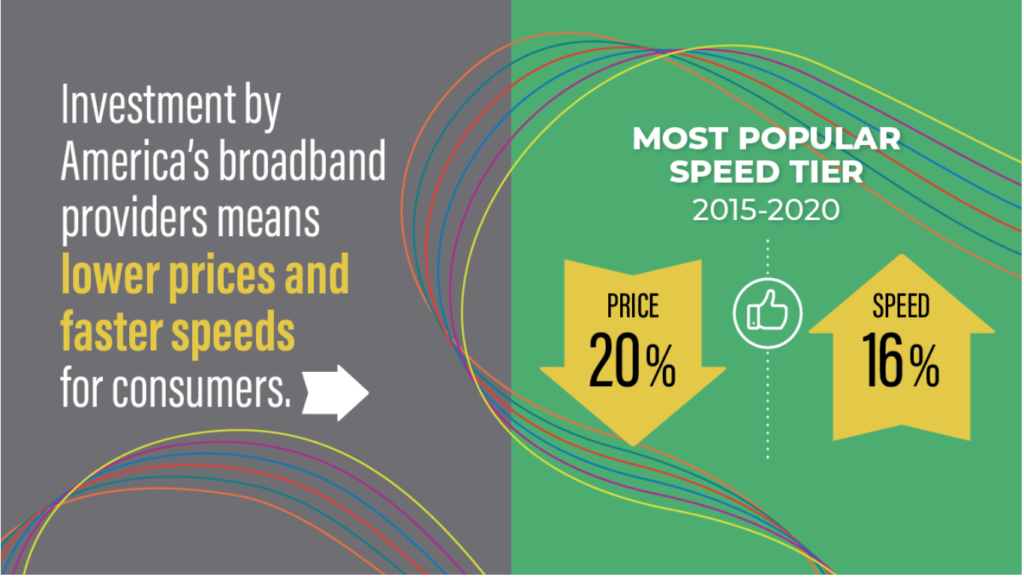
EU Shows Government Regulation Expands the Digital Divide
By: Bridget Visconti
There is a persistent myth that Europe somehow has better, cheaper broadband than the United States. Now we have even more hard data that shows this is not true. US broadband prices are decreasing, the network is more resilient, and US internet users have better and more flexible access to digital tools and resources.
The US chose to avoid the restrictive command and control path set by the EU for broadband development, which prevented the US from having a much more substantial digital divide. Estimates show that the digital divide could have been three times higher had the US focused government regulation over private investment. This would have led to an additional 39.5 million Americans without broadband access. Further illustrating this point, the US leads the EU in rural area deployment by about 20% at 30 Mbps, which is even more impressive given that the US has a much narrower definition as to what counts as a rural area.
The US dominates over its EU counterparts in terms of broadband deployment, adoption, investment, and competition. Recent data from USTelecom shows that the US’s prioritization of investment through both the public and private sector instead of the burdensome government regulation seen throughout Europe leads to better broadband results hands down.
Between 2012 and 2018, US investment in broadband was about 40% higher than in the EU and US broadband providers invest about $700 per household which is about three times higher than in the EU.
Higher investment levels lead to the US having cheaper and higher quality broadband. For example, “the most popular tier of broadband service in 2015 is now priced at about 20 percent lower and offers nearly 16 percent faster speeds in 2020.”

In terms of broadband adoption, the share of US households with fixed broadband subscriptions of 30 Mbps (or higher) is 10% above that in the EU. More Americans are adopting broadband, and they are turning to broadband with higher speeds than their European counterparts.
The US’s decision to turn to private investment and innovation, and not strict regulation and government intervention has led to greater internet access, lower prices, and better services for Americans, serving as another example that free markets are the key to bridging the digital divide.
Photo Credit: Compare Fiber
Infographic Credit: USTelecom